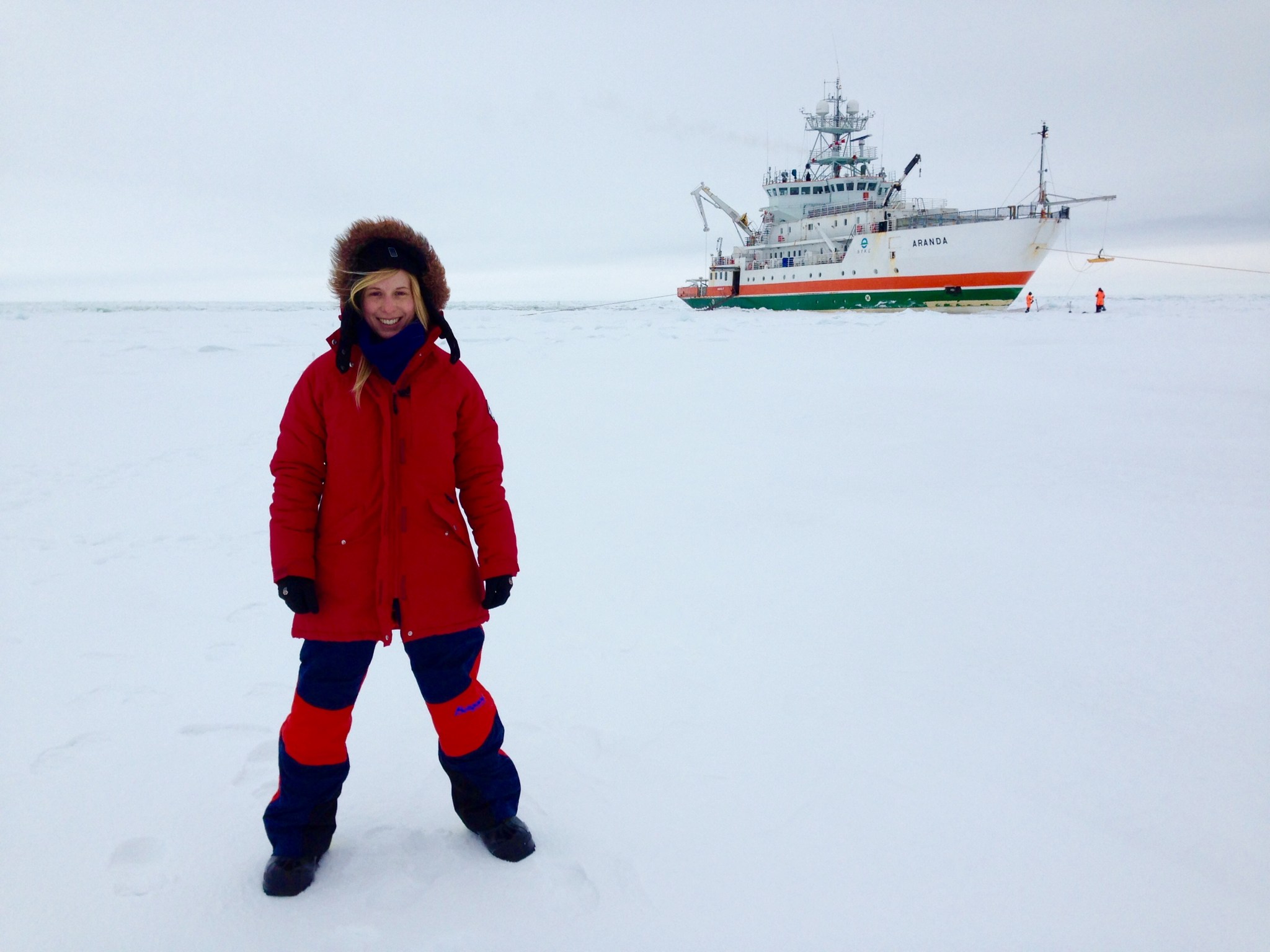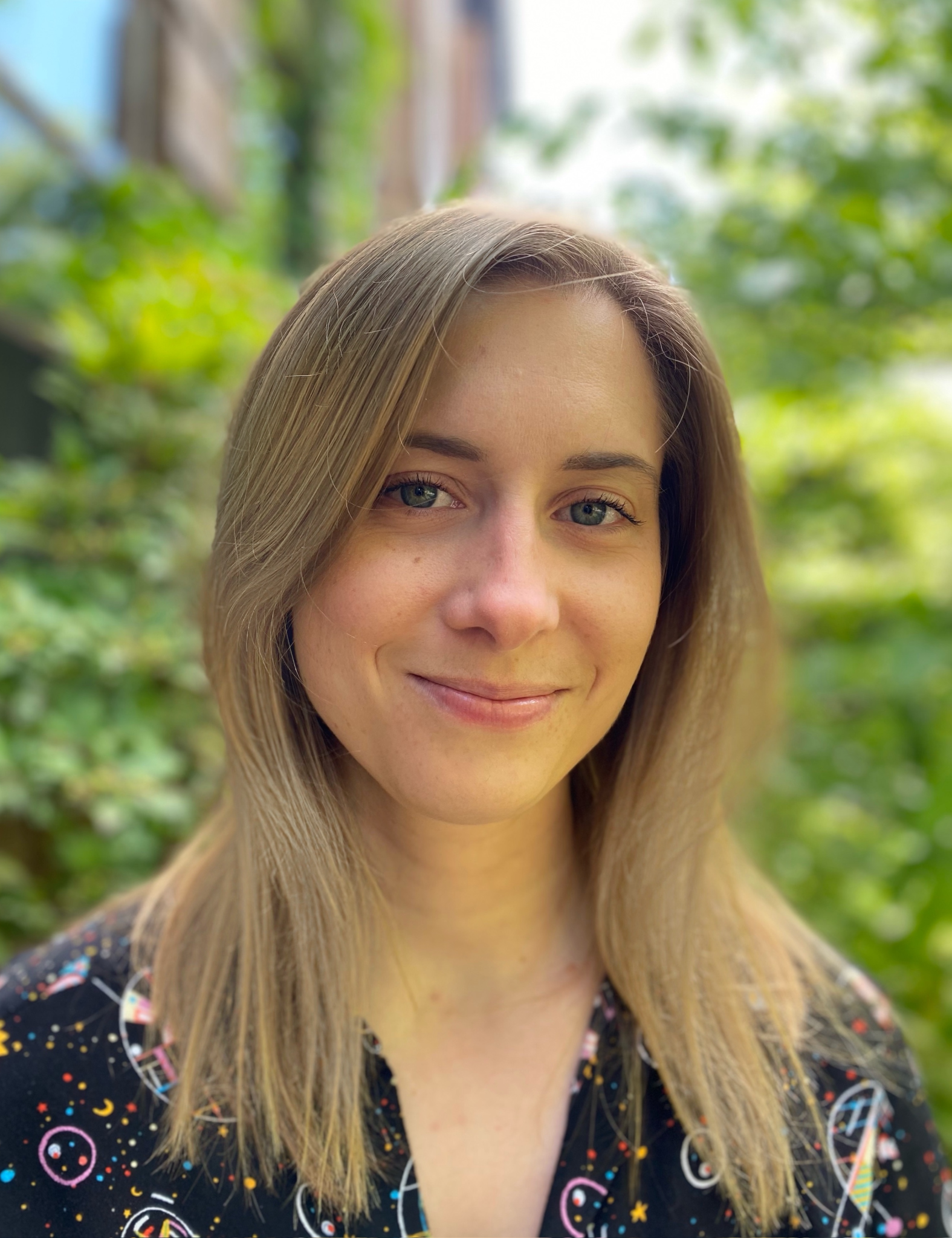Name: Rachel L. Tilling
Formal Job Classification: Assistant Research Scientist
Organization: Code 615, Cryospheric Sciences Laboratory, Sciences and Exploration Directorate
What do you do and what is interesting about your role here at Goddard?
I’m in the Cryospheric Sciences Lab. We focus on polar science. I use satellite data, mainly from NASA’s ICESat-2 mission, to look at sea ice. Sea ice is frozen ocean water, and we can use satellites to get an idea of how it’s changing over time and how it’s being impacted by climate change. I get to be involved at the project level, seeing how satellite missions work, how the data are developed, and looking at the cool data we get from the satellite. I have also gotten to travel to the Arctic and the Antarctic for fieldwork.
How did you become interested in studying ice?
From a young age, I loved the ocean. My dad and my older brother were both scuba divers. As soon as I was old enough to learn to dive at age 12, I got my scuba license. That has been one of my lifelong passions; that’s where I’ve felt at home. So I pursued my master’s in oceanography. During that, I read a paper written by the man who became my PhD advisor. The paper was the very first that used satellite data to estimate sea ice thickness. It brought everything together that I love: the polar regions, satellite stuff, the ocean, and physics.
You mentioned traveling to the Arctic and Antarctic for field work. What were those experiences like?
I’ve been twice to the Arctic and once to the Antarctic. All three of those trips had to do with validating the accuracy of satellite measurements from the ground. The satellite we were verifying was the European Space Agency’s CryoSat-2. We had this great old radar set up on a sled. The heating box was literally held together in places by duct tape, and there was cardboard to stop the snow getting in. We dragged the sled around and squinted at this little computer screen in the glaring Sun, taking measurements to doublecheck the accuracy of the satellite data.
The first time I stayed there we set up camp on the sea ice. I’ve never felt cold like it. You wake up and your breath is frozen on the top of the tent. But it was still one of the greatest things I’ve ever done. It was so much fun. You’re actually on the sea ice, and it’s not stationary: you’re drifting throughout the day. You can hear the ice creaking underneath you. The other two times were a bit more luxurious — in the sense that I was on a ship.
Why is studying the polar regions important to you?
The Arctic especially is changing so rapidly, even throughout my career. For example, when I first started, most of the estimates of when the Arctic might become ice free were by the end of the century. Now there’s papers coming out saying maybe in the next couple of decades. We need to worry about that because the ice doesn’t just cool the Arctic or the Antarctic, it cools the rest of the globe as well because it reflects some of the Sun’s energy. This is going to impact our weather, and longer term, our climate as well.
What do you enjoy about working at Goddard?
Our lab is a really supportive, friendly group to work in. Even though what we’re doing can be stressful and high pressure sometimes, everyone makes time for each other. I also really enjoy working with people who have so many different backgrounds and specialties. It’s easy to just connect with the laser engineer for the satellite or speak to a programmer for a data product. You get to work with so many different types of people who have an insight that as a scientist, you might not have, which I think definitely helps me do better research.
You mentioned scuba diving, but what are your other passions outside of work?
I advocate for mental health support, especially in education systems. When I was going through school, I wish there had been more support for that. Through the American Foundation for Suicide Prevention, we have a program called “It’s Real,” which is designed to educate college students on different mental health issues and the avenues of support that they can get for that.
What is your advice to people who are thinking about pursuing science as a career?
Don’t tell yourself that science isn’t for you. When I was in school, I was put off by not having the most encouraging peers around me, and also by being a girl who wanted to do physics. Don’t talk yourself out of the game before you’ve even tried –– but do keep asking questions, and do stay curious.

Conversations With Goddard is a collection of question and answer profiles highlighting the breadth and depth of NASA’s Goddard Space Flight Center’s talented and diverse workforce. The Conversations have been published twice a month since May 2011. Read past editions on Goddard’s “Our People” webpage.





























